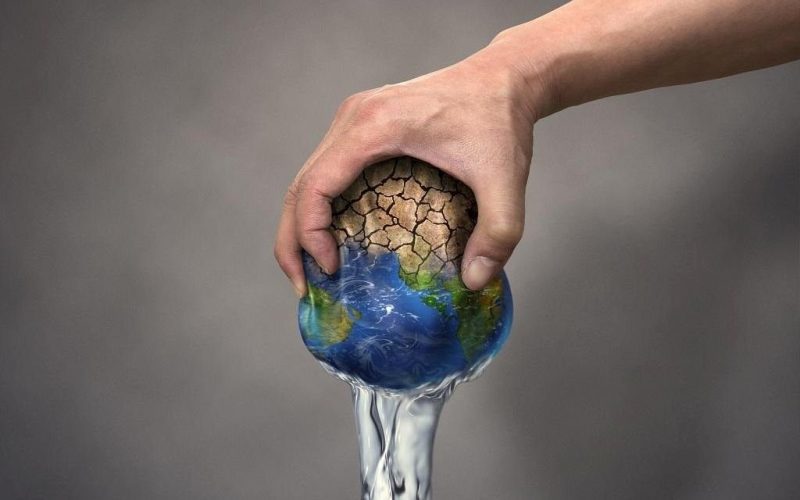Water is the essence of life, a fundamental resource that sustains ecosystems, supports agriculture, and fuels economic growth. Yet, the world is grappling with a severe global water crisis, with billions of people lacking access to clean and safe drinking water. This crisis is exacerbated by climate change, population growth, and mismanagement of water resources. However, innovative solutions are emerging to address this critical issue. This article explores some of the most promising and groundbreaking approaches to tackling the global water crisis.
The Magnitude of the Crisis
According to the World Health Organization (WHO), around 2.2 billion people lack access to safely managed drinking water services. The United Nations predicts that by 2025, half of the world’s population will live in water-stressed areas. The crisis is not just about scarcity but also about quality. Contaminated water leads to diseases such as cholera, dysentery, and typhoid, contributing to the deaths of approximately 485,000 people annually.
Desalination: Turning Seawater into Freshwater
Desalination is a process that removes salts and minerals from seawater to produce fresh water suitable for human consumption and irrigation. This technology has been around for decades, but recent advancements have made it more efficient and cost-effective. Countries like Saudi Arabia, Israel, and Australia are leading the way in large-scale desalination projects.
One of the most innovative approaches is the use of solar energy to power desalination plants. Solar desalination reduces the reliance on fossil fuels, making the process more sustainable. For instance, the Solar Water Solutions company in Finland has developed a solar-powered desalination unit that can produce up to 10,000 liters of clean water per day, even in remote areas.
Wastewater Treatment and Reuse
Wastewater treatment and reuse is another promising solution to the global water crisis. Instead of discharging treated wastewater into rivers or oceans, it can be recycled for various purposes, including agricultural irrigation, industrial processes, and even potable water.
Singapore’s NEWater initiative is a pioneering example of wastewater reuse. The country treats and purifies wastewater to produce high-quality drinking water, meeting up to 40% of its water needs. This approach not only conserves freshwater resources but also reduces pollution and environmental degradation.

Atmospheric Water Generation
Atmospheric Water Generation (AWG) is an emerging technology that extracts water from humid air. This technology is particularly useful in arid regions where traditional water sources are scarce. AWG devices use cooling and condensation techniques to capture moisture from the air, providing a sustainable source of clean water.
Companies like Watergen and Zero Mass Water are at the forefront of AWG technology. Watergen’s GENNY unit, for example, can produce up to 30 liters of drinking water per day from the air, making it ideal for households and small communities. Similarly, Zero Mass Water’s SOURCE hydropanels use solar energy to generate clean drinking water, even in remote and off-grid locations.
Smart Irrigation Systems
Agriculture accounts for approximately 70% of global freshwater withdrawals, making it a significant contributor to water scarcity. Smart irrigation systems offer a solution by optimizing water use in agriculture. These systems use sensors, weather data, and machine learning algorithms to determine the precise amount of water needed for crops, reducing waste and improving efficiency.
Drip irrigation is a well-known example of smart irrigation. This method delivers water directly to the plant roots through a network of tubes and emitters, minimizing evaporation and runoff. Advanced versions of drip irrigation systems are now equipped with soil moisture sensors and automated controls, further enhancing water use efficiency.
Rainwater Harvesting
Rainwater harvesting is a traditional yet highly effective solution to the global water crisis. This method involves collecting and storing rainwater for later use, reducing the demand on conventional water sources. Rainwater can be harvested from rooftops, paved surfaces, and other catchment areas, and then stored in tanks or reservoirs.
Innovative rainwater harvesting systems are now incorporating modern technologies to improve efficiency and storage capacity. For example, modular rainwater storage units can be easily installed in urban settings, providing a decentralized water supply for households and communities. Additionally, smart rainwater harvesting systems use sensors and IoT technology to monitor water levels and optimize usage.
Water-Efficient Appliances and Fixtures
Water-efficient appliances and fixtures play a crucial role in reducing water consumption in households and commercial buildings. Innovations in this area include low-flow toilets, water-saving showerheads, and high-efficiency washing machines and dishwashers.
One notable example is the development of the Hydrao Smart Showerhead, which uses LED lights to indicate water usage in real-time, encouraging users to conserve water. Similarly, the Nebia shower system atomizes water into millions of tiny droplets, providing a luxurious shower experience while using significantly less water than traditional showerheads.
Policy and Community Engagement
Technological solutions alone are not enough to address the global water crisis. Effective policies, regulations, and community engagement are essential components of a comprehensive strategy. Governments and organizations must work together to implement water management practices that promote sustainability and resilience.
Community engagement is particularly important in ensuring the success of water conservation initiatives. Educating communities about the importance of water conservation and involving them in decision-making processes can lead to more sustainable water use practices. Programs like the WaterSense initiative in the United States provide resources and incentives for individuals and businesses to adopt water-efficient practices.
Conclusion
The global water crisis is a complex and multifaceted challenge that requires innovative solutions and collaborative efforts. From desalination and wastewater treatment to atmospheric water generation and smart irrigation, a range of cutting-edge technologies are being developed to address water scarcity and quality issues. However, these technological advancements must be complemented by effective policies, community engagement, and sustainable water management practices.
As the world continues to face the impacts of climate change and population growth, the need for innovative solutions to the global water crisis has never been more urgent. By harnessing the power of technology and fostering a culture of conservation, we can ensure that future generations have access to the clean and safe water they need to thrive.












